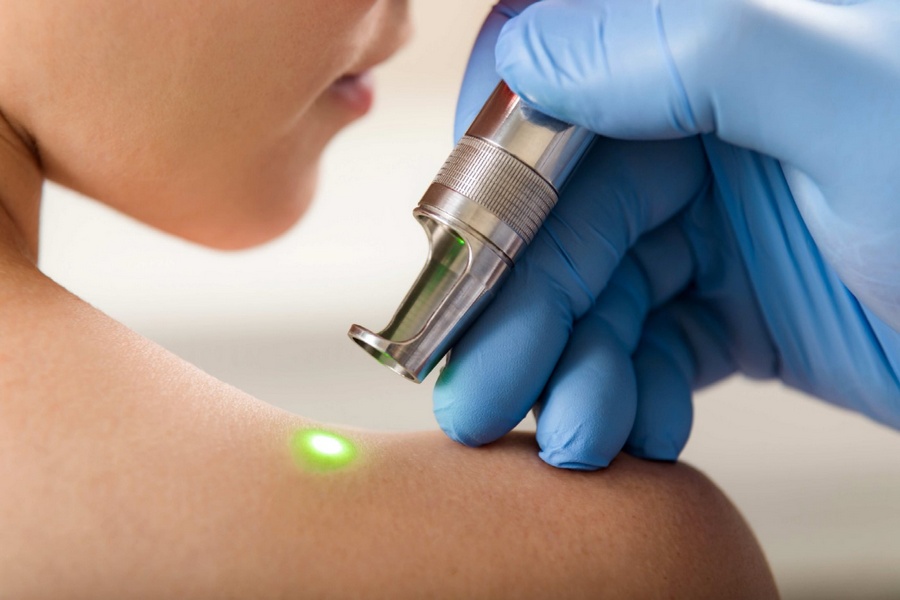Commonly referred to as normal moles, these skin lesions are generally benign and can manifest in a variety of shapes and dimensions as observed by a top skin specialist at Proderma Clinic. Typically, their shape is circular or elliptical, exhibiting a uniform texture and hue. The emergence of these moles is typically observed during the developmental stages of childhood or adolescence, and they tend to maintain a consistent appearance throughout the individual’s adult life. Typically, the extraction of normal moles is unnecessary.
Atypical Moles
Atypical moles, also known as dysplastic nevi, are characterized by anomalous characteristics. In general, they exhibit a larger physical dimension compared to typical moles and possess borders that are characterized by irregularity. Atypical nevi may exhibit variegated pigmentation or exhibit a pebbly or scaly morphology. Moles exhibiting certain characteristics are associated with an increased likelihood of progressing to melanoma, a form of malignant skin neoplasm. Hence, it is advisable to subject atypical nevi to assessment by a dermatological specialist and contemplate their excision in case of exigency.
Pigmented Moles
Congenital nevi are characterized by the presence of pigmented lesions that are either present at birth or emerge shortly thereafter. The size of moles can exhibit considerable variation, ranging from diminutive to colossal, with some covering a substantial area of the body. Although the majority of congenital moles are benign, those of a larger size present a slightly elevated likelihood of progressing into melanoma. Dermatologists may advise the excision of a mole either for aesthetic purposes or if the mole presents a potential hazard to one’s health.
Acquired Moles
Acquired moles are melanocytic nevi that manifest postnatally and have the potential to emerge at any point in an individual’s life. Although generally benign, alterations in the dimensions, configuration, pigmentation, or consistency of these nevi may warrant additional scrutiny. If an acquired mole exhibits indications of atypicality, a dermatologist may advise its excision as a precautionary measure to eliminate any potential hazards.
Spitz Nevi
Spitz nevi, a type of mole, are infrequently observed in pediatric and adolescent populations. Lesions that are raised, pink, or reddish have the potential to bear a resemblance to melanoma. The differentiation between Spitz nevi and melanoma can pose a challenge, hence it is imperative to seek the expertise of a dermatologist for accurate assessment and treatment.
Final Thoughts
To sum up, it is imperative to comprehend the distinct categories of moles and their attributes to recognize when their elimination may be advisable. Performing routine self-examinations and seeking periodic evaluations from a dermatologist at a reliable skin rejuvenation clinic such as Proderma Clinic can promote the maintenance of optimal skin health and overall well-being.

I am an administrative assistant with eight years of experience in the executive team of a Fortune 500 company.


